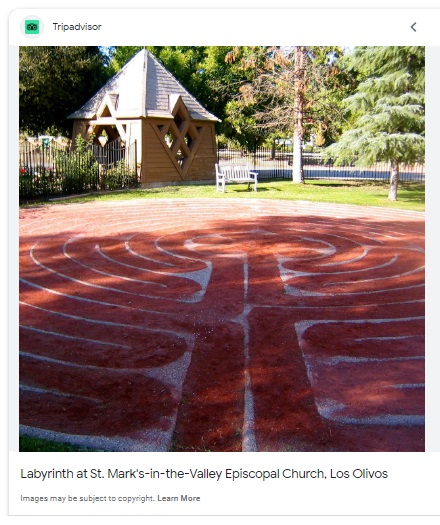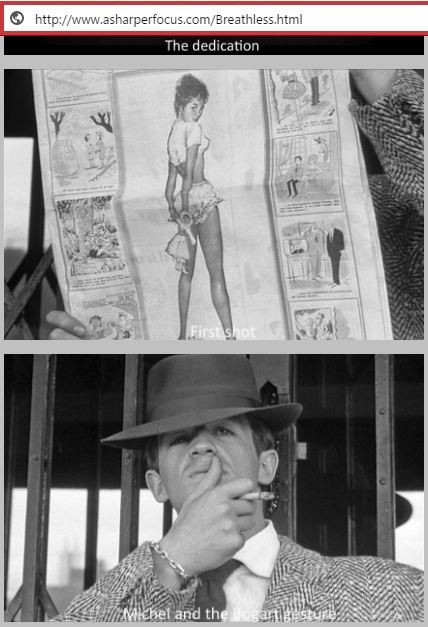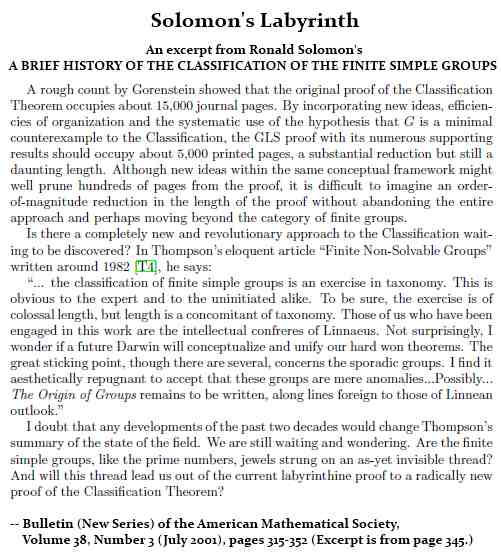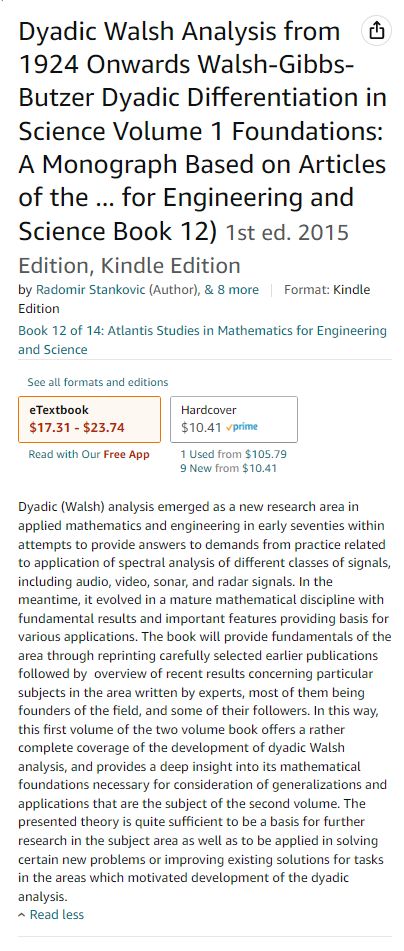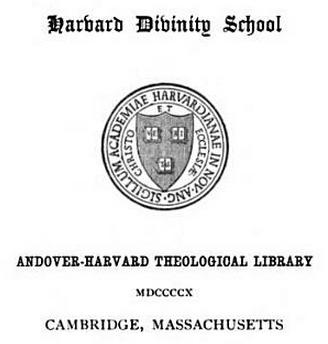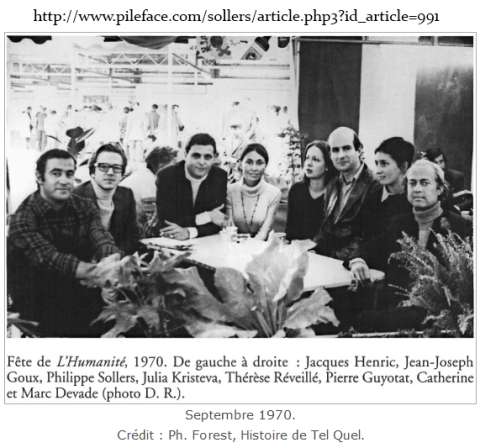Monday, September 9, 2024
For “The Perfect Couple” — Facets and Labyrinth
Tuesday, September 3, 2024
Mission: Possible — Facets and Labyrinth
"… to explore what it means to be human
in all the facets of that and the labyrinth of that."
Wednesday, November 29, 2023
Saturday, October 7, 2023
Labyrinth Clue
The cocktail remarks in yesterday's New York Times
suggest a song lyric . . .
"There's plenty of dives to be something you're not . . . ."
— Roseanne Cash, Seven-Year Ache.
From this date, October 7th, seven years ago —
|
The Paz quote below is from the last chapter
Update of Saturday, October 8, seven years ago: I do not recommend taking very seriously the work of Latin American leftists (or American academics) who like to use the word "dialectic." A related phrase does, however, have a certain mystic or poetic charm, as pointed out by Wikipedia —
"Unity of opposites is the central category of dialectics, |
A graphic companion to the "unity of opposites" notion —
|
From Savage Logic— Sunday, March 15, 2009 5:24 PM The Origin of Change
A note on the figure
"Two things of opposite natures seem to depend
— Wallace Stevens, |
Sunday, September 10, 2023
Mythspace Architecture: Labyrinth and Lychgate

"Having seen Labyrinth at St. Mark's-in-the-Valley Episcopal Church,
it's time to have a rest at this restaurant."
— https://restaurantguru.com/Bar-Le-Cote-Los-Olivos-California
"It's wine country , after all." — "All the Old Knives"
Saturday, December 26, 2020
For Children of the Labyrinth
Wednesday, December 26, 2018
Mathematical Labyrinth
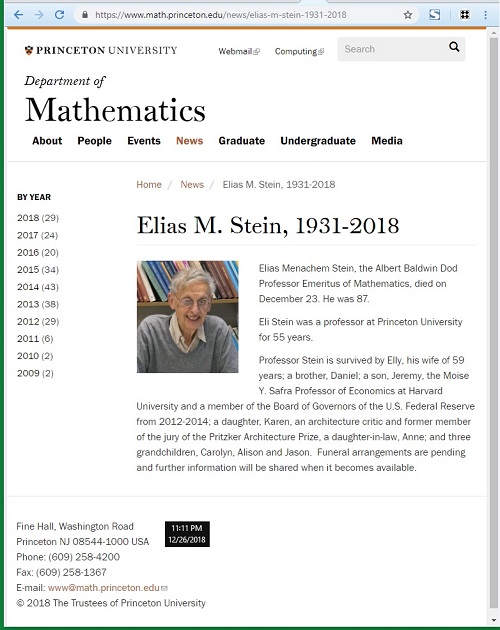
See as well Stein in posts tagged Narrative Labyrinth.
Wednesday, November 9, 2016
In the Labyrinth of Memory
Thursday, October 6, 2016
A Labyrinth for Octavio
The title refers to the previous post.
|
From Middlemarch (1871-2), by George Eliot, Ch. III — "Dorothea by this time had looked deep into the ungauged reservoir of Mr. Casaubon's mind, seeing reflected there in vague labyrinthine extension every quality she herself brought; had opened much of her own experience to him, and had understood from him the scope of his great work, also of attractively labyrinthine extent. For he had been as instructive as Milton's 'affable archangel;' and with something of the archangelic manner he told her how he had undertaken to show (what indeed had been attempted before, but not with that thoroughness, justice of comparison, and effectiveness of arrangement at which Mr. Casaubon aimed) that all the mythical systems or erratic mythical fragments in the world were corruptions of a tradition originally revealed. Having once mastered the true position and taken a firm footing there, the vast field of mythical constructions became intelligible, nay, luminous with the reflected light of correspondences. But to gather in this great harvest of truth was no light or speedy work." |
See also the term correspondence in this journal.
Saturday, July 2, 2016
Friday, February 13, 2015
Labyrinths
Part I: From The Librarians —
Part II: From Condé Nast, 1 World Trade Center —
Part III: From the air date of The Librarians ' labyrinth episode —
Sunday, December 2, 2012
Knight’s Labyrinth
A magic— indeed, diabolic— square:

For the construction, see a book
by W. W. Rouse Ball, founding president
of a Cambridge University magic society.
For some related religious remarks,
see Raiders of the Lost Matrix.
Tuesday, October 23, 2012
Labyrinth 23
The title refers to a search (see below)
suggested by three things—
- David Foster Wallace biographer D. T. Max—
"There's a note in one of my files where he says something like,
'Infinite Jest was just a means to Mary Karr's end, as it were.' " - "There is a body on the cross in my church ." —Mary Karr
- A body.
The search— Labyrinth 23.
(Within the search results, note particularly the post "The Infinity Point.")
Monday, January 23, 2012
Labyrinth
"Yo sé de un laberinto griego que es una línea única, recta."
—Borges, "La Muerte y la Brújula"
"I know of one Greek labyrinth which is a single straight line."
—Borges, "Death and the Compass"
Friday, August 26, 2011
Solomon’s Labyrinth
Some context for last night's post on group theorist Michael Aschbacher—
Wednesday, March 2, 2011
Labyrinth of the Line
“Yo sé de un laberinto griego que es una línea única, recta.”
—Borges, “La Muerte y la Brújula”
“I know of one Greek labyrinth which is a single straight line.”
—Borges, “Death and the Compass”
Another single-line labyrinth—
Robert A. Wilson on the projective line with 24 points
and its image in the Miracle Octad Generator (MOG)—
Related material —
The remarks of Scott Carnahan at Math Overflow on October 25th, 2010
and the remarks at Log24 on that same date.
A search in the latter for miracle octad is updated below.

This search (here in a customized version) provides some context for the
Benedictine University discussion described here on February 25th and for
the number 759 mentioned rather cryptically in last night’s “Ariadne’s Clue.”
Update of March 3— For some historical background from 1931, see The Mathieu Relativity Problem.
Saturday, December 5, 2009
Logic of the Labyrinth
Tuesday, October 22, 2024
Depth
James Hillman
EGALITARIAN TYPOLOGIES
VERSUS THE PERCEPTION OF THE UNIQUE
“The kind of movement Olson urges is an inward deepening of the image,
an in-sighting of the superimposed levels of significance within it.
This is the very mode that Jung suggested for grasping dreams —
not as a sequence in time, but as revolving around a nodal complex.”
See as well "True Grids" (Log24, August 9, 2018).
The Wikipedia "Truchet tiles" article shown above illustrates Hillman's
"superimposed levels of significance."
For more levels, see Wang on Gõdel and other posts tagged For Stella Maris.
Friday, September 27, 2024
To Phrase a Coin
(Continued from May 2, 2023 and December 18, 2022)

Harmonic analysis based on the circle involves the
circular functions. Dyadic harmonic analysis involves …
Summary, as an illustration of a title by George Mackey —

Monday, July 1, 2024
The Coin
"Quizá yo acabe por gastar el Zahir a fuerza de pensarlo
y de repensarlo, quizá detrás de la moneda esté Dios."
Related images . . .


Saturday, June 22, 2024
Sunday, May 19, 2024
Thursday, May 9, 2024
Hollywood Epistemology
New teaser trailer . . .
Earlier teaser trailer . . . October 7, 2023 . . .
This journal on the above 2023 trailer date . . .
Tuesday, May 2, 2023
Wednesday, December 28, 2022
The Santa Fe Institute as Magisterium Wannabe
"The novelist Cormac McCarthy has been a fixture around
the Santa Fe Institute since its embryonic stages in the
early 1980s. Cormac received a MacArthur Award in 1981
and met one of the members of the board of the MacArthur
Foundation, Murray Gell-Mann, who had won the Nobel Prize
in physics in 1969. Cormac and Murray discovered that they
shared a keen interest in just about everything under the sun
and became fast friends. When Murray helped to found the
Santa Fe Institute in 1984, he brought Cormac along, knowing
that everyone would benefit from this cross-disciplinary
collaboration." — https://www.santafe.edu/news-center/news/
cormac-and-sfi-abiding-friendship
Joy Williams, review of two recent Cormac McCarthy novels —
"McCarthy has pocketed his own liturgical, ecstatic style
as one would a coin, a ring, a key, in the service of a more
demanding and heartless inquiry through mathematics and
physics into the immateriality, the indeterminacy, of reality."
A Demanding and Heartless Coin, Ring, and Key:
COIN

RING
"We can define sums and products so that the G-images of D generate
an ideal (1024 patterns characterized by all horizontal or vertical "cuts"
being uninterrupted) of a ring of 4096 symmetric patterns. There is an
infinite family of such 'diamond' rings, isomorphic to rings of matrices
over GF(4)."
KEY
"It must be remarked that these 8 heptads are the key to an elegant proof…."
— Philippe Cara, "RWPRI Geometries for the Alternating Group A8," in
Finite Geometries: Proceedings of the Fourth Isle of Thorns Conference
(July 16-21, 2000), Kluwer Academic Publishers, 2001, ed. Aart Blokhuis,
James W. P. Hirschfeld, Dieter Jungnickel, and Joseph A. Thas, pp. 61-97.
For those who prefer a "liturgical, ecstatic style" —

Thursday, December 22, 2022
Sunday, December 18, 2022
“Square Round” — Ulysses, end of Ch. 17
Circle and Square at the Court of King Minos —

Harmonic analysis based on the circle involves the
circular functions. Dyadic harmonic analysis involves …
For some related history, see (for instance) . . .
Saturday, July 23, 2022
Myth Space
From the new URL mythspace.org, which forwards to . . .
http://m759.net/wordpress/?tag=mythspace —
|
From Middlemarch (1871-2), by George Eliot, Ch. III — "Dorothea by this time had looked deep into the ungauged reservoir of Mr. Casaubon's mind, seeing reflected there in vague labyrinthine extension every quality she herself brought; had opened much of her own experience to him, and had understood from him the scope of his great work, also of attractively labyrinthine extent. For he had been as instructive as Milton's 'affable archangel;' and with something of the archangelic manner he told her how he had undertaken to show (what indeed had been attempted before, but not with that thoroughness, justice of comparison, and effectiveness of arrangement at which Mr. Casaubon aimed) that all the mythical systems or erratic mythical fragments in the world were corruptions of a tradition originally revealed. Having once mastered the true position and taken a firm footing there, the vast field of mythical constructions became intelligible, nay, luminous with the reflected light of correspondences. But to gather in this great harvest of truth was no light or speedy work." |
See also the term correspondence in this journal.
Thursday, May 12, 2022
Dark Ride Design
In memory of an actor who reportedly died on May 7 —
"Mr. Jenkin's play aspires to a Borgesian take on
American cultural rubble (pulp novels, films noir,
diner menus, pop songs, etc.), here assembled into
a labyrinthine, coincidence-driven and self-consciously
artificial plot." — Ben Brantley, New York Times ,1996
Wednesday, February 24, 2021
Annals of Dim Antiquity
“Twenty-four glyphs, each one representing not a letter, not a word,
but a concept, arranged into four groups, written in Boris’s own hand,
an artifact that seemed to have resurrected him from the dead. It was
as if he were sitting across from Bourne now, in the dim antiquity of
the museum library.
This was what Bourne was staring at now, written on the unfolded
bit of onionskin.”
— The Bourne Enigma , published on June 21, 2016
Passing, on June 21, 2016, into a higher dimension —
For those who prefer Borges to Bourne —
Saturday, December 26, 2020
Futon Dream
” There’s a line from the movie ‘The Paper Chase’, in which
the fearsome Professor Kingsfield tells a room of first-year
law-school students ‘You come in here with a skull full of mush …
and you leave thinking like a lawyer.’ “
— James Propp on December 14, 2020, in . . .
Related material — Japanese Bed.
Wednesday, December 23, 2020
Facets . . .
“The book by Hesse has many facets ….” (Link added.)
— V. V. Nalimov, In the Labyrinths of Language ,
Ch. 1, “What Language Is,” p. 22.
Related philosophical speculation —
Sunday, June 14, 2020
On the Road Again
See as well the Log24 post “In the Labyrinth of Memory”
(January 8, 2003).
Saturday, December 29, 2018
Winter Tree
The title is that of a 1977 poem by Jon Lang.
A different sort of narrative tree, from The Onion on the
date Friday, July 1, 2016, was illustrated in the previous post.
Material from this journal related to July 1, 2016,
and the following day, a Saturday, is now tagged
"Saturday Night in the Labyrinth."

"A Damned Serious Business." — Rex Harrison on comedy
Friday, September 1, 2017
Patterns for the Abbess
On Ursula K. Le Guin's short story
"The Rock That Changed Things"
(in A Fisherman of the Inland Sea ) —
|
By Richard D. Erlich, December 2005 … And at this point a wise, old nur, so excellent at maintaining patterns that the obls let him live even after he was maimed, enters the discussion to do some pattern criticism. For a first-order approximation reading, he suggests "It might say, 'The nur places stones,'" and others fill in that the nur would be Bu. Ko corrects them with "patterns aren't ever about nurs!" and Bu counters with "Maybe patterns made of colors are." Looking with all three of his eyes, Ko reads, "—'the nur places stones beautifully in uncontrollable loopingness …. foreshadowing the seen.'" Un suggests "The vision" but cannot figure out the last word. Bu is very excited, inferring that "the patterns of the colors …. aren't accidental. Not meaningless. All the time, we have been putting them here in patterns—not just ones the obls design and we execute, but other patterns—nur patterns—with new meanings." Amid the straight lines of the obls' designs they now see, "other designs, less complete, often merely sketched or hinted—circles, spirals, ovals, and complex curvilinear mazes and labyrinths of great and unpredictable beauty and significance. *** Both patterns were there; did one cancel the other, or was each part of the other? It was difficult to see them both at once, but not impossible." Had the nurs done this all totally unconsciously "without even knowing we were doing it?" Un admits to having looked at colors, and so did Ko, plus "grain and texture." Un warns them to keep word of their works from the Professors: "They don't like patterns to change…. It makes them nervous"— and nervous Professors are dangerous to nurs (62-63). Bu, however "was so excited and persuasive" about colors of stones "that other nurs of Obling began studying the color patterns, learning how to read their meanings." And the practice spreads. Soon, all sorts of nurs were finding "wild designs in colored stones, and surprising messages concerning obls, nurs, and blits" (64) Conservative nurs— "Many nurs," we're told—resist the trend. "If we start inventing new meanings, changing things, disturbing the patterns, where will it end?" It is unclear just how many of the nurs believe «Mr. Charlie treats us real good»—or, as we soon see, Ms. Charlie—but certainly not Bu; she "would hear none of that; she was full of her discovery. She no longer listened in silence. She spoke." Bu goes up to the Rectory Mosaic, wearing around her neck a turquoise that she calls her "selfstone." Up at the Mosaic, Bu crouches before the Rectoress and asks "Would the Lady Rectoress in her kindness answer a question I have?" ["The Rock That Changed Things" was first published in Amazing Stories , Vol. 67 # 6, No. 574, September 1992, pp. 9-13.] |
For an alternative to the Rectoress, see the Abbess of the previous post.
Monday, May 15, 2017
For Penelope Reed Doob…
… who reportedly died on March 11 —
Posts now tagged Labyrinth for Penelope.
See also the previous post and this journal on the above date.
Sunday, March 26, 2017
Four-Year* Date
"Eigenvalues. Fixed points. Stable equilibria.
Mathematicians like things that stay put.
And if they can't stay put, the objects of study
should at least repeat themselves on a regular basis. . . ."
— Barry Cipra, "A Moveable Feast," SIAM News , Jan. 14, 2006
Tuesday, March 18, 2014
|
* For a full four years, see also March 18, 2013.
Friday, March 24, 2017
Note for a Vast Waste Land

"Minow is the daughter of former Federal Communications Commission chairman
Newton Minow, and his wife, Josephine (Baskin) Minow. She graduated from
New Trier Township High School in 1972." — Wikipedia
“That corpse you planted last year in your garden,
Has it begun to sprout? Will it bloom this year?
Or has the sudden frost disturbed its bed?"
Friday, March 17, 2017
To Coin a Phrase
(A sequel to the previous post, Narrative for Westworld)
"That corpse you planted last year . . . ." — T. S. Eliot
Circle and Square at the Court of King Minos —
Harmonic analysis based on the circle involves the
circular functions. Dyadic harmonic analysis involves …
For some related history, see (for instance) E. M. Stein
on square functions in a 1982 AMS Bulletin article.
Friday, October 7, 2016
Paz
The Paz quote below is from the last chapter
of his book, titled "The Dialectic of Solitude."

The phrase "dialectic of solitude" has been applied also to a 1967
book by the Colombian writer Gabriel García Márquez:

|
The conclusion of One Hundred Years of Solitude , "He was so absorbed that he did not feel the second surge of wind either as its cyclonic strength tore the doors and windows off their hinges, pulled off the roof of the east wing, and uprooted the foundations. Only then did he discover that Amaranta Úrsula was not his sister but his aunt, and that Sir Francis Drake had attacked Riohacha only so that they could seek each other through the most intricate labyrinths of blood until they would engender the mythological animal that was to bring the line to an end. Macondo was already a fearful whirlwind of dust and rubble being spun about by the wrath of the biblical hurricane when Aureliano skipped eleven pages so as not to lose time with facts he knew only too well, and he began to decipher the instant that he was living, deciphering it as he lived it, prophesying himself in the act of deciphering the last page of the parchments, as if he were looking into a speaking mirror. Then he skipped again to anticipate the predictions and ascertain the date and circumstances of his death. Before reaching the final line, however, he had already understood that he would never leave that room, for it was foreseen that the city of mirrors (or mirages) would be wiped out by the wind and exiled from the memory of men at the precise moment when Aureliano Babilonia would finish deciphering the parchments, and that everything written on them was unrepeatable since time immemorial and forever more, because races condemned to one hundred years of solitude did not have a second opportunity on earth." |
Update of Saturday, October 8:
I do not recommend taking very seriously the work of Latin American leftists
(or American academics) who like to use the word "dialectic."
A related phrase does, however, have a certain mystic or poetic charm,
as pointed out by Wikipedia —
"Unity of opposites is the central category of dialectics,
and it is viewed sometimes as a metaphysical concept,
a philosophical concept or a scientific concept."
See also Bullshit Studies.
Saturday, May 14, 2016
The Hourglass Code
A version of the I Ching’s Hexagram 19:
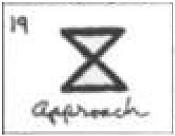
From Katherine Neville's The Eight , a book on the significance
of the date April 4 — the author's birthday —

|
The Eight by Katherine Neville —
“What does this have to do with why we’re here?” |
Related material: Posts now tagged Hourglass Code.
See also the hourglass in a search for Pilgrim's Progress Illustration.
Tuesday, June 2, 2015
Miniature Lowry
A review describes the main character in the 1981 novel
The Knife in My Hands —
"His other peculiar characteristic is a fascination, developed during
his university years, with the Cabala and, like a miniature Lowry,*
he spends much of his time wandering drunkenly through its
labyrinthine mysteries."
AA motto: "Principles before personalities."

* Related material: Back to the Real.
Sunday, December 2, 2012
Realism
From the Los Angeles Times yesterday—

"Chess player Elena Akhmilovskaya Donaldson sits
in deep concentration at the U.S. chess championship
in Seattle in 2002. (Greg Gilbert / Seattle Times /
January 5, 2002)"
Linda Shaw, Seattle Times :
"Elena Akhmilovskaya Donaldson, who was once the world's
second-ranked women's chess player and eloped in 1988
with the captain of the U.S. chess team when they were both
playing at a tournament in Greece, has died. She was 55.
Donaldson, who earned the title of international women's
grandmaster, died Nov. 18 in her adopted hometown of Seattle…."
From the Log24 post "Sermon" on the date of Donaldson's death,
Sunday, Nov. 18, 2012—
"You must allow us to play every conceivable combination of chess."
— Marie-Louise von Franz in Number and Time
An October 2011 post titled Realism in Plato's Cave displays
the following image:
Cover illustration: Knight, Death, and the Devil,
by Albrecht Dürer
George Steiner and myself in Closing the Circle, a Log24 post
of Sept. 4, 2009:
“Allegoric associations of death with chess are perennial….”
"Yes, they are."
For related remarks on knight moves and the devil, see
today's previous two posts, Knight's Labyrinth and The Rite.
Saturday, November 24, 2012
Reappearing All Over Again
For the title, see the phrase "reappearing number" in this journal.
Some related mathematics—
the Greek labyrinth of Borges, as well as…
Note that "0" here stands for "23," while ∞ corresponds to today's date.
Sunday, November 4, 2012
Shakespeare’s Rhyme
From Saturday Night Live last night—
Related material from the Log24 post "Now Lens"
(March 11, 2011)—
Errol Morris in The New York Times on March 9, 2011—
"If everything is incommensurable, then everything
is seen through the lens of the present, the lens of now ."
"Borges concluded by quoting Chesterton, 'there is nothing
more frightening than a labyrinth that has no center.' [72]"
See also Borges on Shakespeare, everything, and nothing
in a note from September 7, 2006.
Everything and nothing in Peter J. Cameron's weblog yesterday—
The existence of everything entails the existence of nothing;
indeed, the existence of anything (any set A) entails
the existence of the empty set (the set {x∈A:x≠x}).
But not the other way round.
Right, I had better put on my anorak and go out now …
Illustration added by m759—
How many miles to Babylon?*
Three score miles and ten.
Can I get there by candle-light?**
Yes, and back again.
* Suggested by the Pindar link in this journal yesterday.
** Quoted in the "Seven is Heaven" post on All Souls' Day.
Saturday, July 21, 2012
Republican
Colin Moynihan on the late Alexander Cockburn—
"His attachment to left-wing journalism— and controversy—
was forged very early on. His father, Claud Cockburn, while
covering the Spanish Civil War for The Daily Worker , joined
the Republican forces fighting the rebellion of Francisco
Franco. (Claud Cockburn, under a pseudonym, also wrote
novels, including Beat the Devil , which was made into a
film with Humphrey Bogart and which his son used as the
title of his column in The Nation .)"
A video linked to in this evening's earlier post suggests
an antidote to the film oeuvre of Guillermo del Toro—
in particular, to Pan's Labyrinth.

Friday, June 15, 2012
Elements
In memory of Paul Sussman, author of archaeological
mystery novels about Egypt—
|
"… the sacred symbols of the cosmic elements — Thrice-Great Hermes: Excerpts and Fragments , |
Sussman's last novel, not yet published, was
Sussman, 45, reportedly died suddenly on May 31, 2012.
A perhaps relevant thought—
"A world of made
is not a world of born— pity poor flesh
and trees, poor stars and stones, but never this
fine specimen of hypermagical
ultraomnipotence."
– e. e. cummings, 1944
Friday, March 16, 2012
For the Clueless
"And she provided him besides with a ball of thread,
bidding him to fasten the end of it to the entrance
of the Labyrinth, and unwind it as he went in, that
it might serve him as a clue to find his way out again."
— "Theseus and Ariadne," by Charles Morris
From "Ariadne's Clue," a post of March 1 last year—
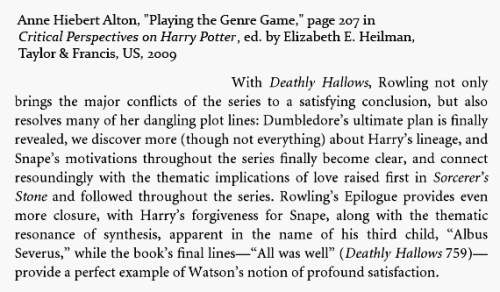
The Watson here is not Emma, but Victor—
Thursday, March 15, 2012
The Head of Caesar
Remarks on Citizen Kane from The New York Times—
"… a kind of metaphysical detective story…. At the end we realize that the fragments are not governed by any secret unity: the detested Charles Foster Kane is a simulacrum, a chaos of appearances.” Borges concluded by quoting Chesterton, "there is nothing more frightening than a labyrinth that has no center." *
* The actual quote is from a Father Brown mystery, "The Head of Caesar," "'What we all dread most,' said the priest in a low voice, 'is a maze with no centre….'"
Tuesday, January 24, 2012
The Infinity Point
From Labyrinth of the Line (March 2, 2011)—
"… construct the Golay code by taking the 24 points
to be the points of the projective line F23 ∪ {∞}…."
— Robert A. Wilson
A simpler projective line— a Galois geometry
model of the line F2 ∪ {∞}—
Here we may consider ∞ to be modeled*
by the third square above— the Galois window .
* Update of about 1 AM Jan. 25, 2012—
This infinity-modeling is of course a poetic conceit,
not to be taken too seriously. For a serious
discussion of points at infinity and finite fields,
see (for instance) Daniel Bump's "The Group GL(2)."
Friday, January 20, 2012
Cock Tale
(Continued from November 12, 2005 and June 7, 2011)
Related material— "Labyrinth," a fiction
by the late Roberto Bolaño
in the current New Yorker —
"There's no photo credit."
Saturday, October 8, 2011
An Ordinary Evening in Hartford
From Rebecca Goldstein's Talks and Appearances page—
• "36 (Bad) Arguments for the Existence of God,"
Annual Meeting of the Freedom from Religion Foundation,
Marriot, Hartford, CT, Oct 7 [2011], 7 PM
From Wallace Stevens—
"Reality is the beginning not the end,
Naked Alpha, not the hierophant Omega,
of dense investiture, with luminous vassals."
— “An Ordinary Evening in New Haven” VI
For those who prefer greater depth on Yom Kippur, yesterday's cinematic link suggests…
"Yo sé de un laberinto griego que es una línea única, recta."
—Borges, "La Muerte y la Brújula " ("Death and the Compass")
See also Alpha and Omega (Sept. 18, 2011) and some context from 1931.
Saturday, September 24, 2011
Ariadne and the Exorcist
The title describes two philosophical events (one major, one minor) from the same day— Thursday, July 5, 2007. Some background from 2001:
"Are the finite simple groups, like the prime numbers, jewels strung on an as-yet invisible thread? And will this thread lead us out of the current labyrinthine proof to a radically new proof of the Classification Theorem?" (p. 345)
— Ronald Solomon, "A Brief History of the Classification of Finite Simple Groups," Bulletin of the American Mathematical Society , Vol. 38 No. 3 (July 2001), pp. 315-352
The major event— On July 5, 2007, Cambridge University Press published Robert T. Curtis's Symmetric Generation of Groups.*
Curtis's book does not purport to lead us out of Solomon's labyrinth, but its publication date may furnish a Jungian synchronistic clue to help in exiting another nightmare labyrinth— that of postmodernist nominalism.
The minor event— The posting of Their Name is Legion in this journal on July 5, 2007.
* This is the date given by Amazon.co.uk and by BookDepository.com. Other sources give a later July date, perhaps applicable to the book's publication in the U.S. rather than Britain.
Saturday, August 27, 2011
This Way to the Egress*
From http://msa-x.msa-x.org/?p=1064 —
"Exit Art New York, The Labyrinth Wall:
From Mythology to Reality" —
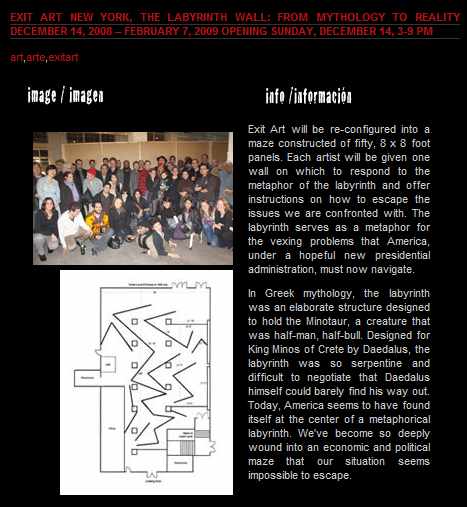
From tonight's online New York Times obituaries —
Ms. Ingberman died Wednesday. Related material—
Symmetry (Wednesday), Design (Thursday), Solomon's Labyrinth (Friday).
See also an essay by John Haber —
"Exit Art may yet offer an alternative: shut them up in the labyrinth, with the Minotaur and, as in Iraq, no Ariadne's thread to guide them out. Jeannette Ingberman and Papo Colo line the space with 'The Labyrinth Wall: From Mythology to Reality,' inviting fifty-one artists to cover its sixty-two panels."
— "Marlene Dumas, The Labyrinth Wall, and Emily Jacir"
Haber (ibid .) also describes artist Marlene Dumas, a recent winner of a Royal Swedish Academy Schock Prize. For a fellow Schock winner— mathematician Michael Aschbacher— see Thursday's Design.)
* For another version of the title, see this morning's front page.
Friday, August 26, 2011
Abel Prize
The previous posts, Design and Solomon's Labyrinth,
refer, respectively, to concepts of Tits ("buildings") and
of Thompson (imagining a future Origin of Groups ).
This suggests a review of Norway's 2008 Abel Prize,
presented to Thompson and Tits on May 20, 2008.
Poster display before the 2008 Abel Prize ceremony—
A poster of sorts in this journal on the same day, May 20, 2008—
|
Bright Star – … Todo lo sé por el lucero puro – Rubén Darío 
Image adapted from |
Related material— Epiphany Revisited, Four Winds,
and Where Entertainment is God (continued).
Monday, May 9, 2011
Queen’s Gambit*
From March 9 four years ago—

* See this journal and the novel.
Update of 10 AM May 9—
Midrash for Gnostics —
A post linked to under "this journal" (above) has a brief discussion of theology and Wallace Stevens—
"Professor Eucalyptus in 'Ordinary Evening' XIV, for example, 'seeks/ God in the object itself '…."
I have more confidence that God is to be found in the Ping Pong balls of the New York Lottery.
This suggests a check of yesterday's NY numbers. They were… Midday 780, Evening 302.
A search for 780 in this journal yields a post quoting The Scotsman 's reporter Rhiannon Edward.
Related material:
Rhiannon's Scotsman story of May 6—
Rapist gets 20 years after justice system finally believes his victims
See also this journal on May 7 —

For yesterday's NY evening 302, see the "780" post involving Rhiannon—
Glenn Ford as a playboy from Argentina —

— and "302" interpreted as "3/02," which yields…
"Yo sé de un laberinto griego que es una línea única, recta."
—Borges, "La Muerte y la Brújula"
"I know of one Greek labyrinth which is a single straight line."
—Borges, "Death and the Compass"
For some background music, click here.
Friday, March 11, 2011
Now Lens
A Story in Pictures
Errol Morris in The New York Times on March 9—
"If everything is incommensurable, then everything is seen through the lens of the present, the lens of now ."
"Borges concluded by quoting Chesterton, 'there is nothing more frightening than a labyrinth that has no center.' [72]"






Sunday, April 18, 2010
A Generation Lost in Space
or, Deja Vu All Over Again
Top two obituaries in this morning's NY Times list–
|
David Simons, Who Flew High Dr. Simons, a physician turned Air Force officer, had sent animals aloft for several years before his record-breaking flight. James Aubrey, who Portrayed the Hero Mr. Aubrey portrayed Ralph in the film version of the William Golding novel and had a busy career on stage and television in England. |
Simons reportedly died on April 5,
Aubrey on April 6.
This journal on those dates–
April 5 —
Monday, April 5, 2010Space Cowboys
Google News, 11:32 AM ET today–
Related material: Yesterday's Easter message, |
April 6 —
Tuesday, April 6, 2010Clue
See also Leary on Cuernavaca, Team Daedalus"Concept (scholastics' verbum mentis)– theological analogy of Son's procession as Verbum Patris, 111-12" –Index to Joyce and Aquinas, by William T. Noon, Society of Jesus, Yale University Press 1957, second printing 1963, page 162 "Back in 1958… [four] Air Force pilots were Team Daedalus, the best of the best." –Summary of the film "Space Cowboys" "Man is nothing if not labyrinthine." –The Vicar in Trevanian's The Loo Sanction\ |
|
"At the moment which is not of action or inaction |
Tuesday, April 6, 2010
Team Daedalus
"Concept (scholastics' verbum mentis)– theological analogy of Son's procession as Verbum Patris, 111-12" –Index to Joyce and Aquinas, by William T. Noon, Society of Jesus, Yale University Press 1957, second printing 1963, page 162
"Back in 1958… [four] Air Force pilots were Team Daedalus, the best of the best." –Summary of the film "Space Cowboys"
"Man is nothing if not labyrinthine." –The Vicar in Trevanian's The Loo Sanction
Friday, December 4, 2009
And continued…
Glory Road postgraduate curriculum–
"Learning has always been a major part of Catholic tradition."
Related material:
The Labyrinth of Solitude
entry in this journal,
The Harvard Crimson on the
Harvard FML Video Contest,
and the winning video—
Another view of Harvard–
"Let Noon Be Fair."
— Novel title, Willard Motley.
See also Soul at Harvard.
Tuesday, May 27, 2008
Tuesday May 27, 2008
(See last night’s entry.)
“Now, gentlemen,
I give you
our latest acquisition
from the enemy.”
Note the number, 701,
on the colonel’s collar.
Adapted from Log24,
February 19-22, 2008:
the pleasant female voice echoed
through the Blue Concourse
of New York’s
Port Authority Terminal….
See 2/22/08,
4/19/08,
and 5/22/08.
….’What happened?’
‘It’s eternity in there,’ he said,
and dropped dead….”
— Stephen King, “The Jaunt“
Die Liebe nahm kein Ende mehr.
Thursday, May 22, 2008
Thursday May 22, 2008
An Exercise in
Conceptual Art
THE JUDGMENT
Undertakings bring misfortune.
Nothing that would further.

“Brian O’Doherty, an Irish-born artist,
before the [Tuesday, May 20] wake
of his alter ego* ‘Patrick Ireland’
on the grounds of the
Irish Museum of Modern Art.”
— New York Times, May 22, 2008
THE IMAGE
Thus the superior man
understands the transitory
in the light of
the eternity of the end.
Another version of
the image:
See 2/22/08
and 4/19/08.
Michael Kimmelman in today’s New York Times—
“An essay from the ’70s by Mr. O’Doherty, ‘Inside the White Cube,’ became famous in art circles for describing how modern art interacted with the gallery spaces in which it was shown.”
Brian O’Doherty, “Inside the White Cube,” 1976 Artforum essays on the gallery space and 20th-century art:
“The history of modernism is intimately framed by that space. Or rather the history of modern art can be correlated with changes in that space and in the way we see it. We have now reached a point where we see not the art but the space first…. An image comes to mind of a white, ideal space that, more than any single picture, may be the archetypal image of 20th-century art.”

“Nothing that would further.”
— Hexagram 54
|
…. Now thou art an 0 |
“…. in the last mystery of all the single figure of what is called the World goes joyously dancing in a state beyond moon and sun, and the number of the Trumps is done. Save only for that which has no number and is called the Fool, because mankind finds it folly till it is known. It is sovereign or it is nothing, and if it is nothing then man was born dead.”
— The Greater Trumps,
by Charles Williams, Ch. 14
Sunday, February 24, 2008
Sunday February 24, 2008

“A labyrinthine man never seeks
the truth, but always, only, his Ariadne….
Who besides myself knows what Ariadne is?”
— Nietzsche,
epigraph to Ariadne’s Lives,
by Nina daVinci Nichols
(See yesterday’s entry.)
Related material:
Entries of Feb. 13
and Feb. 19 at Log24
and the entry of Feb. 13 at
Ariachne’s Broken Woof ![]()
![]() Troilus and Cressida in Act 5, Scene 2:
Troilus and Cressida in Act 5, Scene 2:
“And yet the spacious breadth of this division
Admits no orifex for a point as subtle
As Ariachne’s broken woof to enter.
Instance, O instance! strong as Pluto’s gates;
Cressid is mine, tied with the bonds of heaven:
Instance, O instance! strong as heaven itself;
The bonds of heaven are slipp’d, dissolved, and loosed….”
Friday, February 8, 2008
Friday February 8, 2008
Prizes and Rewards
"… like the victors in the games
collecting their prizes,
we receive our reward…."
— Conclusion of
Plato's Republic
From The Harvard Crimson
front page on
Mardi Gras, 2008:
Harvard senior Matthew Di Pasquale
plans a new campus magazine called
"Diamond"–
Related material:
Friday, April 20, 2007
Friday April 20, 2007
"… Bush spoke and answered audience questions for nearly 90 minutes inside East Grand Rapids High School in suburban Grand Rapids….
After leaving the school, Bush's motorcade stopped at the Gerald R. Ford Presidential Museum in downtown Grand Rapids, where he stood silently for a few moments after placing a bouquet of white roses at Ford's burial site on the museum grounds. The 38th president, who grew up in Grand Rapids, died Dec. 26 at age 93."

above, see this morning's entry and
an entry that it links to —
Time's Labyrinth continued —
of March 8, 2007.
For the meaning of multispeech,
see the entries of
All Hallows' Eve, 2005:

"There is such a thing
as a tesseract."
— A Wrinkle in Time
Friday April 20, 2007
Part I
|
The Library of Congress “American sculptor Daniel Chester French was born in Exeter, New Hampshire on April 20, 1850. His colossal seated figure of Abraham Lincoln presides over the Lincoln Memorial. Reared in Cambridge and Concord, Massachusetts, he was embraced by members of the Transcendentalist community including Ralph Waldo Emerson. Author and fellow Concord resident Louisa May Alcott encouraged young French to pursue a career as an artist. Louisa’s sister, artist May Alcott, was his early teacher. French studied in Boston and New York prior to receiving his first commission for the 1875 statue The Minute Man. Standing near the North Bridge in Concord, in the Minute Man National Historical Park, this work commemorates events at the North Bridge, the site of ‘the shot heard ’round the world.’ An American icon, images derivative of The Minute Man statue appeared on defense bonds, stamps, and posters during World War II.” |
 |
Log24 on the anniversary of
Lincoln’s assassination —
|
Saturday, April 14, 2007 4:30 AM The Sun Also Sets, or… This Way to
the Egress Continued from April 12: “I have only come here
— Robert Stone, |
Log24 entry of
November 7, 2003 —
 |
— and a
student play from
Virginia Tech:

Part V:
Symmetry
for Beavis and Butt-Head
and
The Rhetoric of Scientism:
It’s a very ancient saying,
But a true and honest thought,
That if you become a teacher,
By your pupils you’ll be taught.
— Oscar Hammerstein,
“Getting to Know You”
Saturday, April 14, 2007
Saturday April 14, 2007
the Egress
Continued from April 12:
“I have only come here
seeking knowledge,
Things they would not
teach me of in college….”
— Synchronicity lyrics
|
Quoted in Log24,
Time’s Labyrinth continued: “The sacred axe was used to kill the King. The ritual had been the same since the beginning of time. The game of chess was merely a reenactment. Why hadn’t I recognized it before?”
— Katherine Neville,
The Eight, Ballantine reprint, 1990, |
“Know the one about
the Demiurge and the
Abridgment of Hope?”
— Robert Stone,
A Flag for Sunrise,
Knopf, 1981,
the final page:
Thursday, March 8, 2007
Thursday March 8, 2007
Mujer Trabajadora

“Yo es que nací un 8 de marzo,
Día de la Mujer Trabajadora,
y no he hecho más que
trabajar toda mi vida.”
For background on Aldecoa,
see a paper (pdf) by
Sara Brenneis:
“Josefina Aldecoa intertwines
history, collective memory
and individual testimony in her
historical memory trilogy…”
The Triangle Shirtwaist Factory Fire in New York City on March 25, 1911, was the largest industrial disaster in the history of the city of New York, causing the death of 146 garment workers who either died in the fire or jumped to their deaths.
Propaganda, March 1977:
“On March 8, 1908, after the death of 128 women trapped in a fire at the Triangle Shirtwaist Factory in New York City, 15,000 women workers from the garment and textile industry marched echoing the demands of their sisters 50 years earlier…”
Propaganda, March 2006:
“First of all, on March 8th, 1857, a large number of factory workers in the United States took to the streets to demand their economic and political rights. The owners called the police who arrived immediately and opened fire, engaging in blind repression… Later on, in 1908, the same date of March 8th was once again a memorable date of struggle. On this day, capitalist bosses in Chicago set fire to a textile factory where over a thousand women worked. A very large number was terribly burnt. 120 died!”
Propaganda disguised as news, March 2007:
From today’s top story in 24 HoursTM, a commuter daily in Vancouver published by Sun Media Corporation:
Fight still on for equality
By Robyn Stubbs and Carly Krug
“International Women’s Day commemorates a march by female garment workers protesting low wages, 12-hour workdays and bad working conditions in New York City on March 8, 1857.
Then in 1908, after 128 women were trapped and killed in a fire at a New York City garment and textile factory, 15,000 women workers again took their protests to the street.”
Related historical fiction:
A version of the
I Ching’s Hexagram 19:


— Katherine Neville, The Eight
|
“What does this have to do with why we’re here?”
“I saw it in a chess book Mordecai showed me. The most ancient chess service ever discovered was found at the palace of King Minos on Crete– the place where the famous Labyrinth was built, named after this sacred axe. The chess service dates to 2000 B.C. It was made of gold and silver and jewels…. And in the center was carved a labrys.” … “But I thought chess wasn’t even invented until six or seven hundred A.D.,” I added. “They always say it came from Persia or India. How could this Minoan chess service be so old?” “Mordecai’s written a lot himself on the history of chess,” said Lily…. “He thinks that chess set in Crete was designed by the same guy who built the Labyrinth– the sculptor Daedalus….” Now things were beginning to click into place…. “Why was this axe carved on the chessboard?” I asked Lily, knowing the answer in my heart before she spoke. “What did Mordecai say was the connection?”…. “That’s what it’s all about,” she said quietly. “To kill the King.” The sacred axe was used to kill the King. The ritual had been the same since the beginning of time. The game of chess was merely a reenactment. Why hadn’t I recognized it before? |
Perhaps at the center of
Aldecoa’s labyrinth lurk the
capitalist bosses from Chicago
who, some say, set fire
to a textile factory
on this date in 1908.
For a Freudian perspective
on the above passage,
see yesterday’s entry
In the Labyrinth of Time,
with its link to
John Irwin‘s essay
“The False Artaxerxes:
Borges and the
Dream of Chess.”

Symbols
S. H. Cullinane
March 7, 2007
Today, by the way, is the
feast of a chess saint.
Wednesday, March 7, 2007
Wednesday March 7, 2007
of Time:
8:24:48
AM EST
Related material–
Symbols:

and
“The False Artaxerxes:
Borges and the
Dream of Chess“
This entry was inspired by
Xanga footprints yesterday
from Virginia:
| 1. Virginia Weblog ART WARS: Time and the Grid |
3/6/2007 9:48 AM |
| 2. Virginia Weblog Sequel |
3/6/2007 11:38 AM |
| 3. Virginia Weblog Games and Truth |
3/6/2007 1:25 PM |
| 4. Virginia /item.aspx?user=m759&ta… The Transcendent Signified |
3/6/2007 5:15 PM |
| 5. Virginia /item.aspx?user=m759&ta… Zen and Language Games |
3/6/2007 5:16 PM |
| 6. Virginia /item.aspx?user=m759&ta… Balanchine’s Birthday |
3/6/2007 6:12 PM |
| 7. Virginia /item.aspx?user=m759&ta… The Agony and the Ya-Ya |
3/6/2007 6:12 PM |
| 8. Virginia /item.aspx?user=m759&ta… Directions Out |
3/6/2007 6:13 PM |
| 9. Virginia /item.aspx?user=m759&ta… The Four Last Things |
3/6/2007 6:13 PM |
Wednesday, January 31, 2007
Wednesday January 31, 2007
“At times, bullshit can only be
countered with superior bullshit.”
— Norman Mailer
“It may be that universal history is the
history of the different intonations
given a handful of metaphors.”
— Jorge Luis Borges (1951),
“The Fearful Sphere of Pascal,”
in Labyrinths, New Directions, 1962
— Joseph A. Goguen, “Ontology, Society, and Ontotheology” (pdf)
Goguen does not give a source for this alleged “thoughts of God” statement.
A Web search for the source leads only to A Mathematical Journey, by Stanley Gudder, who apparently also attributes the saying to Euclid.
Neither Goguen nor Gudder seems to have had any interest in the accuracy of the Euclid attribution.
Talk of “nature” and “God” seems unlikely from Euclid, a pre-Christian Greek whose pure mathematics has (as G. H. Hardy might be happy to point out) little to do with either.
Loose talk about God’s thoughts has also been attributed to Kepler and Einstein… and we all know about Stephen Hawking.
Gudder may have been misquoting some other author’s blather about Kepler. Another possible source of the “thoughts of God” phrase is Hans Christian Oersted. The following is from Oersted’s The Soul in Nature—
“Sophia. Nothing of importance; though indeed I had one question on my lips when the conversion took the last turn. When you alluded to the idea, that the Reason manifested in Nature is infallible, while ours is fallible, should you not rather have said, that our Reason accords with that of Nature, as that in the voice of Nature with ours?
Alfred. Each of these interpretations may be justified by the idea to which it applies, whether we start from ourselves or external nature. There are yet other ways of expressing it; for instance, the laws of Nature are the thoughts of Nature.
Sophia. Then these thoughts of Nature are also thoughts of God.
Alfred. Undoubtedly so, but however valuable the expression may be, I would rather that we should not make use of it till we are convinced that our investigation leads to a view of Nature, which is also the contemplation of God. We shall then feel justified by a different and more perfect knowledge to call the thoughts of Nature those of God; I therefore beg you will not proceed to [sic] fast.”
Oersted also allegedly said that “The Universe is a manifestation of an Infinite Reason and the laws of Nature are the thoughts of God.” This remark was found (via Google book search) in an obscure journal that does not give a precise source for the words it attributes to Oersted.

Wednesday, January 3, 2007
Wednesday January 3, 2007
11:32:56
“What on earth is
a concrete universal?”
— Robert M. Pirsig
From A Shot at Redemption—
Grand Rapids Revisited
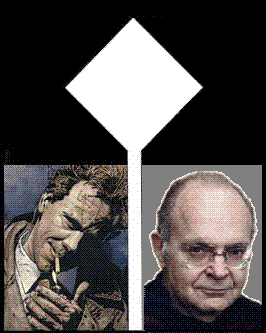
John Constantine,
cartoon character, and
Donald E. Knuth,
Lutheran mathematician
further to Calvin College’s
unparalleled leadership
in the field of
Christian historiography….”
A photo opportunity —

and a recent cartoon:
From Calvin College,
today’s meditation:
Monday, May 22, 2006
Wednesday, December 7, 2005
Wednesday December 7, 2005
(continued)
1:00:19 EST
The Lion, the Witch
and the Wardrobe
premieres tonight at
the Royal Albert Hall.
Hexagram 19 in the
Cullinane series:


— Katherine Neville, The Eight
|
“What does this have to do with why we’re here?”
“I saw it in a chess book Mordecai showed me. The most ancient chess service ever discovered was found at the palace of King Minos on Crete– the place where the famous Labyrinth was built, named after this sacred axe. The chess service dates to 2000 B.C. It was made of gold and silver and jewels…. And in the center was carved a labrys.” … “But I thought chess wasn’t even invented until six or seven hundred A.D.,” I added. “They always say it came from Persia or India. How could this Minoan chess service be so old?” “Mordecai’s written a lot himself on the history of chess,” said Lily…. “He thinks that chess set in Crete was designed by the same guy who built the Labyrinth– the sculptor Daedalus….” Now things were beginning to click into place…. “Why was this axe carved on the chessboard?” I asked Lily, knowing the answer in my heart before she spoke. “What did Mordecai say was the connection?”…. “That’s what it’s all about,” she said quietly. “To kill the King.” The sacred axe was used to kill the King. The ritual had been the same since the beginning of time. The game of chess was merely a reenactment. Why hadn’t I recognized it before? |
|
“But what does it all mean?” asked Susan when they were somewhat calmer. “It means,” said Aslan, “that though the Witch knew the Deep Magic, there is a magic deeper still which she did not know. Her knowledge goes back only to the dawn of Time. But if she could have looked a little further back, into the stillness and the darkness before Time dawned, she would have read there a different incantation. She would have known that when a willing victim who had committed no treachery was killed in a traitor’s stead, the Table would crack and Death itself would start working backward.” |
Sunday, May 22, 2005
Sunday May 22, 2005
The Diamond in the Labyrinth
From the labyrinth of Solitude:
- An Invariant Feast
- Columbia News obituary of Robert D. Cumming
- Solitude
(Phenomenology and Deconstruction, Vol 4
by Robert Denoon Cumming)On page 13 of Solitude —
From Heidegger’s “Letter on Humanism” —
“… so long as philosophy merely busies itself with continually obstructing the possibility of admission to the subject of thinking– that is, the truth of being– it escapes the danger of ever being broken against the hardness of that subject. Thus ‘philosophizing’ about the shattering is separated by an abyss from a thinking that is shattered.”This suggests a search for
“Heidegger” + “diamond,” which yields — - The Diamond at the End of Time,
which leads to - Orson Welles Interviews Jilly Dybka,
which leads to - Poetry Hut Blog,
which leads to
- Fair Territory, by Jilly Dybka,
which contains the following — - The Quickening
I hold my breath, the plane’s
wheels under me
still suspended in the minutes after
takeoff, when the planet’s brute gravity
statistically can cause a disaster.
We are flying low enough that I scan
civilization in miniature.
Blue pill swimming pools, and
roadways that fan
out like ribbons in the wind. On the sure
crust, too, a baseball diamond.
Young boys race
across the tilted surface, mute and small,
kicking up red dust. First base, Second base,
Third Base, Home. We ascend into nightfall
and beneath the broken stars one kid bunts.
I remember I was a rookie once. - From yesterday’s online New York Times:

Sunday May 22, 2005
of Friday the 13th
From Margalit Fox in today’s New York Times:
“Eddie Barclay, who for three decades after World War II was arguably the most powerful music mogul in Europe and inarguably the most flamboyant, died on [Friday] May 13 in Paris. He was 84….
… Mr. Barclay was best known for three things: popularizing American jazz in France in the postwar years; keeping the traditional French chanson alive into the age of rock ‘n’ roll; and presiding over parties so lavish that they were considered just the tiniest bit excessive even by the standards of the French Riviera….
Among the guests at some of his glittering parties… Jack Nicholson….”

Related material:
— quoted by Bruce Graham from The Creators by Daniel Boorstin
“We’ll always have Paris.”
— An Invariant Feast, Log24, Sept. 6, 2004
Friday, May 6, 2005
Friday May 6, 2005
"Difficult to understand because of intricacy: byzantine, complex, complicated, convoluted, daedal, Daedalian, elaborate, intricate, involute, knotty, labyrinthine, tangled."
— Roget's II: The New Thesaurus, Third Edition
as well as Symmetries.
Tuesday, January 6, 2004
Tuesday January 6, 2004
720 in the Book
Searching for an epiphany on this January 6 (the Feast of the Epiphany), I started with Harvard Magazine, the current issue of January-February 2004.
An article titled On Mathematical Imagination concludes by looking forward to
“a New Instauration that will bring mathematics, at last, into its rightful place in our lives: a source of elation….”
Seeking the source of the phrase “new instauration,” I found it was due to Francis Bacon, who “conceived his New Instauration as the fulfilment of a Biblical prophecy and a rediscovery of ‘the seal of God on things,’ ” according to a web page by Nieves Mathews.
Hmm.
The Mathews essay leads to Peter Pesic, who, it turns out, has written a book that brings us back to the subject of mathematics:
Abel’s Proof: An Essay
on the Sources and Meaning
of Mathematical Unsolvability
by Peter Pesic,
MIT Press, 2003
From a review:
“… the book is about the idea that polynomial equations in general cannot be solved exactly in radicals….
Pesic concludes his account after Abel and Galois… and notes briefly (p. 146) that following Abel, Jacobi, Hermite, Kronecker, and Brioschi, in 1870 Jordan proved that elliptic modular functions suffice to solve all polynomial equations. The reader is left with little clarity on this sequel to the story….”
— Roger B. Eggleton, corrected version of a review in Gazette Aust. Math. Soc., Vol. 30, No. 4, pp. 242-244
Here, it seems, is my epiphany:
“Elliptic modular functions suffice to solve all polynomial equations.”
Incidental Remarks
on Synchronicity,
Part I
Those who seek a star
on this Feast of the Epiphany
may click here.
Most mathematicians are (or should be) familiar with the work of Abel and Galois on the insolvability by radicals of quintic and higher-degree equations.
Just how such equations can be solved is a less familiar story. I knew that elliptic functions were involved in the general solution of a quintic (fifth degree) equation, but I was not aware that similar functions suffice to solve all polynomial equations.
The topic is of interest to me because, as my recent web page The Proof and the Lie indicates, I was deeply irritated by the way recent attempts to popularize mathematics have sown confusion about modular functions, and I therefore became interested in learning more about such functions. Modular functions are also distantly related, via the topic of “moonshine” and via the “Happy Family” of the Monster group and the Miracle Octad Generator of R. T. Curtis, to my own work on symmetries of 4×4 matrices.
Incidental Remarks
on Synchronicity,
Part II
There is no Log24 entry for
December 30, 2003,
the day John Gregory Dunne died,
but see this web page for that date.
Here is what I was able to find on the Web about Pesic’s claim:
From Wolfram Research:
From Solving the Quintic —
“Some of the ideas described here can be generalized to equations of higher degree. The basic ideas for solving the sextic using Klein’s approach to the quintic were worked out around 1900. For algebraic equations beyond the sextic, the roots can be expressed in terms of hypergeometric functions in several variables or in terms of Siegel modular functions.”
From Siegel Theta Function —
“Umemura has expressed the roots of an arbitrary polynomial in terms of Siegel theta functions. (Mumford, D. Part C in Tata Lectures on Theta. II. Jacobian Theta Functions and Differential Equations. Boston, MA: Birkhäuser, 1984.)”
From Polynomial —
“… the general quintic equation may be given in terms of the Jacobi theta functions, or hypergeometric functions in one variable. Hermite and Kronecker proved that higher order polynomials are not soluble in the same manner. Klein showed that the work of Hermite was implicit in the group properties of the icosahedron. Klein’s method of solving the quintic in terms of hypergeometric functions in one variable can be extended to the sextic, but for higher order polynomials, either hypergeometric functions in several variables or ‘Siegel functions’ must be used (Belardinelli 1960, King 1996, Chow 1999). In the 1880s, Poincaré created functions which give the solution to the nth order polynomial equation in finite form. These functions turned out to be ‘natural’ generalizations of the elliptic functions.”
Belardinelli, G. “Fonctions hypergéométriques de plusieurs variables er résolution analytique des équations algébrique générales.” Mémoral des Sci. Math. 145, 1960.
King, R. B. Beyond the Quartic Equation. Boston, MA: Birkhäuser, 1996.
Chow, T. Y. “What is a Closed-Form Number.” Amer. Math. Monthly 106, 440-448, 1999.
From Angel Zhivkov,
Preprint series,
Institut für Mathematik,
Humboldt-Universität zu Berlin:
“… discoveries of Abel and Galois had been followed by the also remarkable theorems of Hermite and Kronecker: in 1858 they independently proved that we can solve the algebraic equations of degree five by using an elliptic modular function…. Kronecker thought that the resolution of the equation of degree five would be a special case of a more general theorem which might exist. This hypothesis was realized in [a] few cases by F. Klein… Jordan… showed that any algebraic equation is solvable by modular functions. In 1984 Umemura realized the Kronecker idea in his appendix to Mumford’s book… deducing from a formula of Thomae… a root of [an] arbitrary algebraic equation by Siegel modular forms.”
— “Resolution of Degree Less-than-or-equal-to Six Algebraic Equations by Genus Two Theta Constants“
Incidental Remarks
on Synchronicity,
Part III
From Music for Dunne’s Wake:
“Heaven was kind of a hat on the universe,
a lid that kept everything underneath it
where it belonged.”
— Carrie Fisher,
Postcards from the Edge
|
“720 in |
“The group Sp4(F2) has order 720,”
as does S6. — Angel Zhivkov, op. cit.
Those seeking
“a rediscovery of
‘the seal of God on things,’ “
as quoted by Mathews above,
should see
The Unity of Mathematics
and the related note
Sacerdotal Jargon.

For more remarks on synchronicity
that may or may not be relevant
to Harvard Magazine and to
the annual Joint Mathematics Meetings
that start tomorrow in Phoenix, see
For the relevance of the time
of this entry, 10:10, see
|
Related recreational reading:
|
Labyrinth |
|
Saturday, October 11, 2003
Saturday October 11, 2003
The Mysterious West
Thanks again to KHYI, Plano, Texas, for great poetry. In tonight’s KHYI playlist…
From Spike and Jamie:
WAIT A WHILE AND YOU’LL GROW OLDER;
NEVER MIND WHAT THE OLD FOLKS SAY.
JUST KEEP AN ANGEL ON YOUR SHOULDER;
AND NEVER THROW YOUR DREAMS AWAY
FOR THEY MIGHT SAVE YOUR LIFE ONE DAY.
SONG IS JUST A BOX OF VISIONS;
YOU CAN UNLOCK IT WITH A KEY–
A MESSAGE ROLLED UP INSIDE A BOTTLE
AND DROPPED INTO THE SALTY SEA.
SONG IS JUST A BOX OF VISIONS,
A JAR OF HARPS AND GYPSY’S EARS,
A LABYRINTH OF WILD ROSES,
A JOURNEY THROUGH A HOUSE OF MIRRORS.
WAIT A WHILE AND YOU’LL GROW STRONGER;
NEVER MIND WHAT THE SAD FOLKS SAY.
From Tish Hinojosa:
“It’s the way of life in the real west…”
A search for information on the singer of “Real West” led to a site in Japan that mentions Hinojosa, among many other makers of recommended music:
From Japan–
“an example of understand beyond language is still possible”
Such an example is one of the themes in a movie I admire greatly….
Ghost Dog – The Way of the Samurai.
The hero’s understanding of what his friend says, even though he does not know the friend’s language, is a recurring theme in this film.
As for me… “No entiendo. Sigo trabajando.”
Wednesday, January 8, 2003
Wednesday January 8, 2003
In the Labyrinth of Memory
Taking a cue from Danny in the labyrinth of Kubrick's film "The Shining," today I retraced my steps.
My Jan. 6 entry, "Dead Poet in the City of Angels," links to a set of five December 21, 2002, entries. In the last of these, "Irish Lament," is a link to a site appropriate for Maud Gonne's birthday — a discussion of Yeats's "Among School Children."
Those who recall a young woman named Patricia Collinge (Radcliffe '64) might agree that her image is aptly described by Yeats:
Hollow of cheek as though it drank the wind
And took a mess of shadows for its meat
This meditation leads in turn to a Sept. 20, 2002, entry, "Music for Patricias," and a tune familiar to James Joyce, "Finnegan's Wake," the lyrics of which lead back to images in my entries of Dec. 20, 2002, "Last-Minute Shopping," and of Dec. 28, 2002, "Solace from Hell's Kitchen." The latter entry is in memory of George Roy Hill, director of "The Sting," who died Dec. 27, 2002.
The Dec. 28 image from "The Sting" leads us back to more recent events — in particular, to the death of a cinematographer who won an Oscar for picturing Newman and Redford in another film — Conrad L. Hall, who died Saturday, Jan. 4, 2003.
For a 3-minute documentary on Hall's career, click here.
Hall won Oscars for "Butch Cassidy and the Sundance Kid" and "American Beauty," and may win a posthumous Oscar for "Road to Perdition," last year's Irish-American mob saga:
"Tom Hanks plays Angel of Death Michael Sullivan. An orphan 'adopted' by crime boss John Rooney (Paul Newman), Sullivan worships Rooney above his own family. Rooney gave Sullivan a home when he had none. Rooney is the father Sullivan never knew. Too bad Rooney is the
Rock Island
branch of Capone's mob."
In keeping with this Irish connection, here is a set of images.
|
American Beauty |
|
|
A Game of Chess |
I need a photo-opportunity. I want a shot at redemption. Don't want to end up a cartoon In a cartoon graveyard. — Paul Simon |
"Like a chess player, he knows that to win a tournament, it is sometimes wise to offer a draw in a game even when you think you can win it."
— Roger Ebert on Robert Duvall's character in "A Civil Action"
Director Steven Zaillian will take part in a tribute to Conrad L. Hall at the Palm Springs International Film Festival awards ceremony on Jan 11. Hall was the cinematographer for Zaillian's films "A Civil Action" and "Searching for Bobby Fischer."
"A Civil Action" was cast by the Boston firm Collinge/Pickman Casting, named in part for that same Patricia Collinge ("hollow of cheek") mentioned above.
See also "Conrad Hall looks back and forward to a Work in Progress." ("Work in Progress" was for a time the title of Joyce's Finnegans Wake.)
What is the moral of all this remembrance?
An 8-page (paper) journal note I compiled on November 14, 1995 (feast day of St. Lawrence O'Toole, patron saint of Dublin, allegedly born in 1132) supplies an answer in the Catholic tradition that might have satisfied Joyce (to whom 1132 was a rather significant number):
How can you tell there's an Irishman present
at a cockfight?
He enters a duck.
How can you tell a Pole is present?
He bets on the duck.
How can you tell an Italian is present?
The duck wins.
|
Every picture tells a story. |
|
Friday, August 2, 2002
Friday August 2, 2002
Death of a Cut-up
The dark philosopher William S. Burroughs died five years ago today. Part of his legacy is the "cut-up" technique. See William S. Burroughs and Cut-up, where it is noted that
"the Cut-up technique was inspired by the collage technique used by artists and photographers,"
and Cut-ups and the Internet, where it is noted that
"The cut-up (or 'cutup') is a method of juxtaposition where a work (usually text) is cut into pieces and the pieces rearranged in a random order, similar to the montage or collage technique in painting."
The idea of hypertext (the "ht" in "http://," for "HyperText Transfer Protocol://") is not unrelated to the concept of the "cut-up"…
See Time Line and Contents at The Electronic Labyrinth.
Also from "The Electronic Labyrinth":
At Swim-Two-Birds
The question of beginnings and endings–how many of them to have and where to put them–has troubled many authors. Indeed, some have seen the singular linear path of traditional literature as cause for consternation. This is expressed by the narrator in Flann O'Brien's At Swim-Two-Birds (1968):
One beginning and one ending for a book was a thing I did not agree with.
See also the writings of Eric Olson on the collage method of psychotherapy, the subject of "Aesthetics of Madness," my July 30, 2002, web journal entry below.






